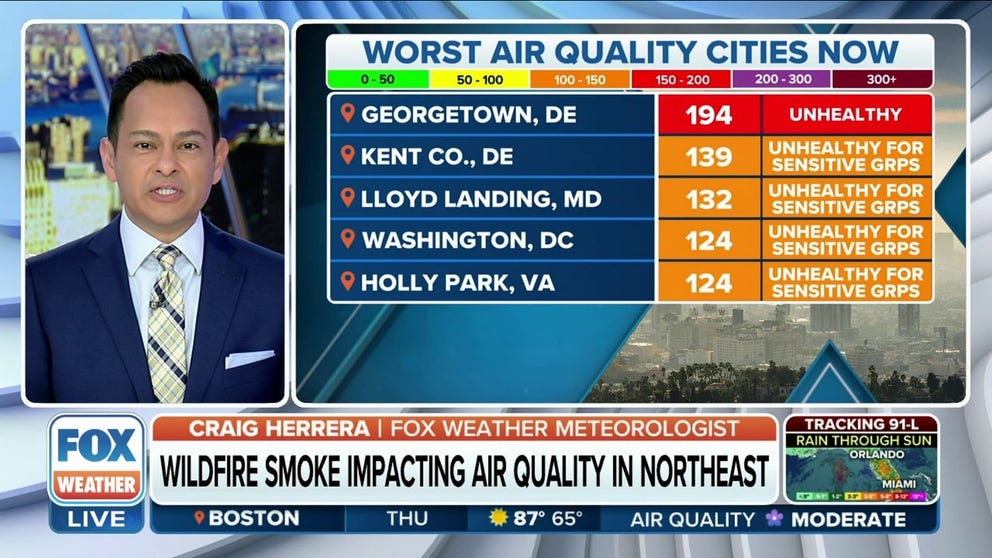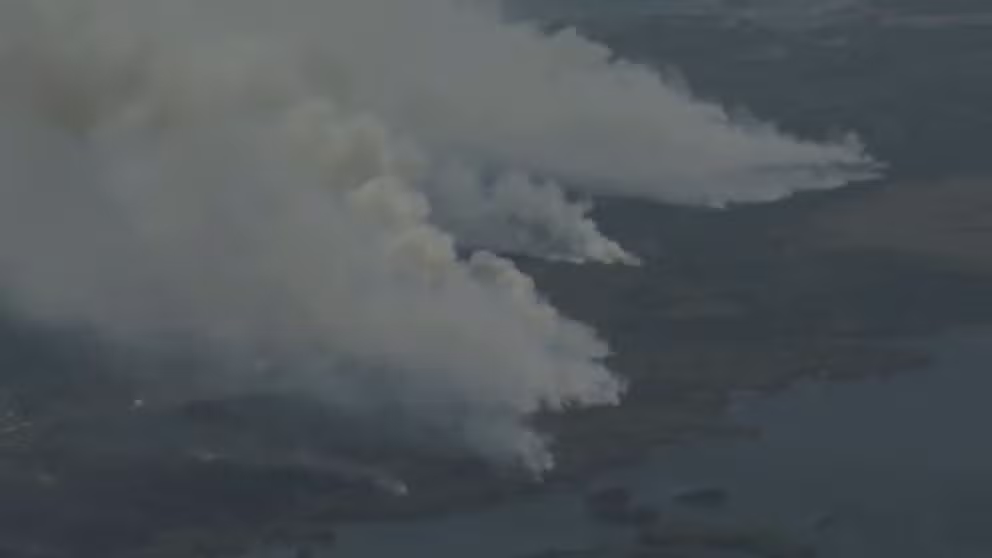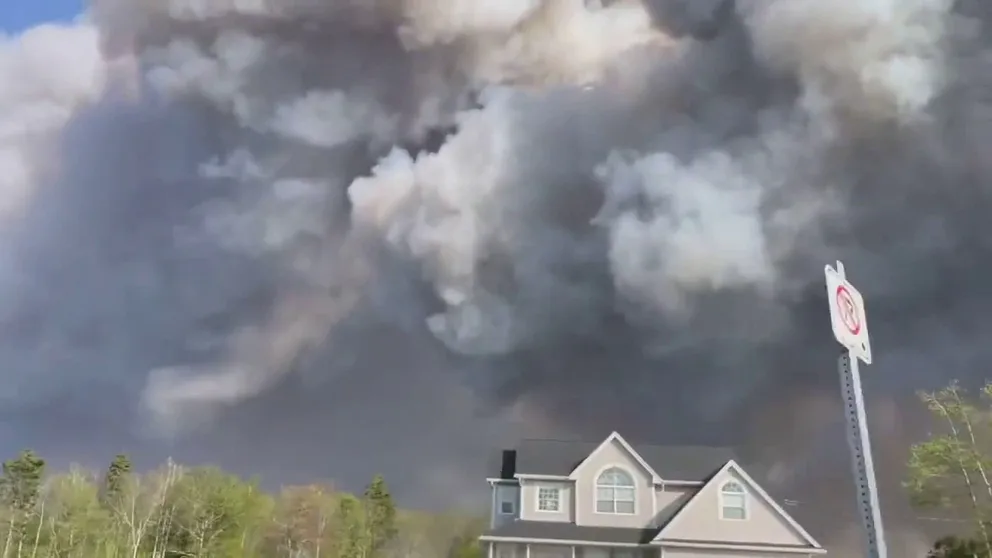Smoke from Nova Scotia's largest wildfire in history chokes the Northeast
Thousands of people have been forced to evacuate, and officials in Halifax say about 200 homes and other structures have been damaged by the fires.
Wildfire smoke from Canada impacting air quality in Northeast US
Smoke emissions from wildfires in Nova Scotia are creating poor air quality conditions in areas such as Washington, D.C., Maryland, Virginia and Delaware.
Smoke from the largest wildfire in Nova Scotia, Canada’s history, has been blowing into the Northeast and mid-Atlantic, prompting officials to issue Air Quality Alerts on Thursday.
Exacerbating the situation is an area of high pressure off the East Coast, which will anchor the smoke in place until at least Friday, when a cold front is expected to move in.
Watch: Smoke from Canadian wildfires billows into the air above Nova Scotia
Thich smoke from wildfires burning in the Canadian province of Nova Scotia is seen billowing into the air on Wednesday, May 31, 2023.
As of Thursday afternoon, 16 wildfires are burning in the province, according to officials in Nova Scotia. They said out-of-control fire has burned more than 45,000 acres, and there are no signs that the blaze will be extinguished anytime soon as thousands of people have been forced to flee their homes.
In addition, hundreds of homes and other buildings have been damaged or destroyed by the flames.
Canadian wildfire smoke enters the Northeast, mid-Atlantic
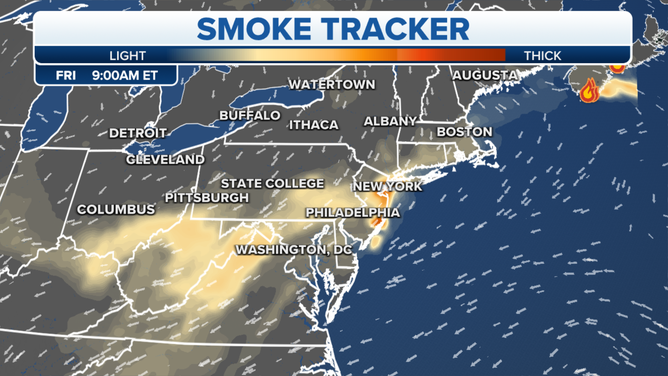
Smoke tracker for Friday, June 2 at 9 a.m. ET.
(FOX Forecast Center / FOX Weather)
Smoke from the wildfires made its way southwest across the water, through Cape Cod, Massachusetts and across parts of New England and the Northeast on Tuesday, with the National Weather Service in Boston reporting that people across the region have been noticing a burning smell in the air.
HOW THE LAY OF THE LAND AFFECTS WILDFIRE BEHAVIOR
Watch: Thick smoke from wildfires fills the sky above Nova Scotia, Canada
Tense video shows thick, black smoke filling the sky above Nova Scotia, Canada. Thousands of people have been forced to evacuate and hundreds of buildings have been damaged or destroyed by the flames.
On Thursday, most of the smoke is expected to linger across portions of New England, Long Island, New York, New Jersey, Pennsylvania, Delaware, Maryland, Washington, D.C., Virginia and West Virginia.
The smoke is expected to begin to dissipate by Friday, with some lingering smoke expected to fill the air across southeastern Ohio, West Virginia and Virginia.
FLYING THROUGH CANADIAN WILDFIRE SMOKE IN THE NORTHERN TIER
Air Quality Alerts in effect in the Northeast

(FOX Weather)
Air Quality Alerts have been issued for millions of Americans along the East Coast as of Thursday afternoon.
The North Shore of Massachusetts, including Boston, is under an Air Quality Alert until at least 11 p.m. Thursday.
Air Quality Alerts also stretch across central and southern Connecticut into New York City, most of New Jersey and all of Delaware.
7 FACTS THAT EXPLAIN HOW AIR QUALITY IS MEASURED
What are the current air quality levels in the Northeast?

(FOX Weather)
A lot of New England and the Northeast are reporting moderate air quality levels. However, areas of Delaware and Pennsylvania is reporting unhealthy air quality levels.
A record amount of smoke from Canadian wildfires in May
While the wildfires are burning in eastern Canada, large-scale wildfires have also been burning across the western portion of the country over the past few weeks.
The provinces of British Columbia, Alberta, Saskatchewan and the Northwest Territories have seen wildfire activity since the beginning of May, according to the Copernicus Atmosphere Monitoring Service in Europe.
Combined with more recent wildfire activity in areas such as Nova Scotia, CAMS stated that the wildfires have produced a record amount of smoke emissions for the month of May, breaking records in British Colombia, Saskatchewan, Northwest Territories and Nova Scotia.
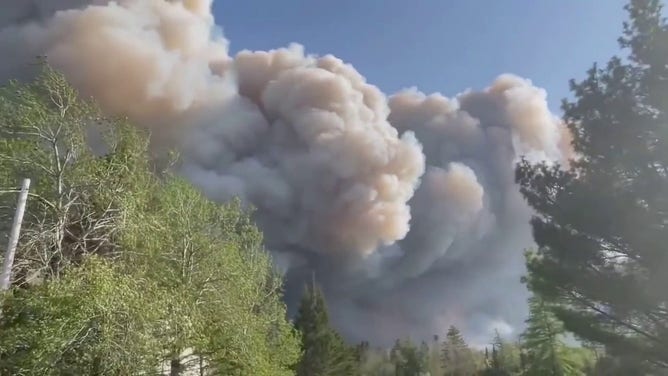
An image showing smoke filling the air on May 30, 2023, above Nova Scotia, Canada, as wildfires continue to scorch the landscape.
(@bigmacdaddy\_eth via Storyful / FOX Weather)
One of the more stark examples involves the province of Saskatchewan. CAMS said the previous record for wildfire smoke emissions for May in Saskatchewan was 2 Megatonnes, while emissions for May 2023 catapulted to 23 Megatonnes.
SMOKE FROM CANADIAN WILDFIRES CHOKES SKIES ACROSS AMERICA'S NORTHERN TIER
Officials warned about the implications of summer heat on the horizon as the wildfires continue to burn.
"As the Northern Hemisphere is approaching summer, it is expected that the variables related to increasing wildfire risk will be exacerbated, such as high temperatures and especially drier conditions," said Mark Parrington, senior scientist with CAMS.
"Monitoring these variables, and the development of wildfires, is crucial to understanding the underlying causes and impacts on the atmosphere in order to take proper action," he added.
